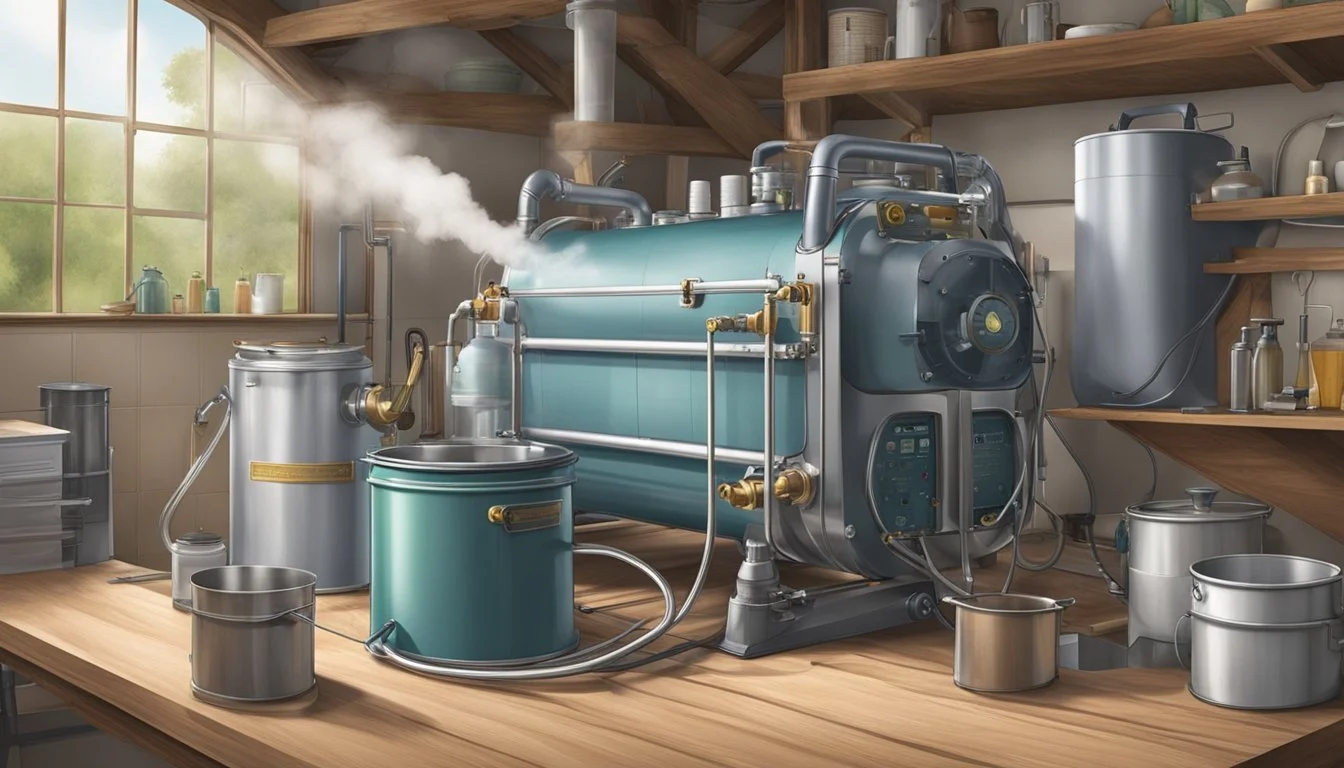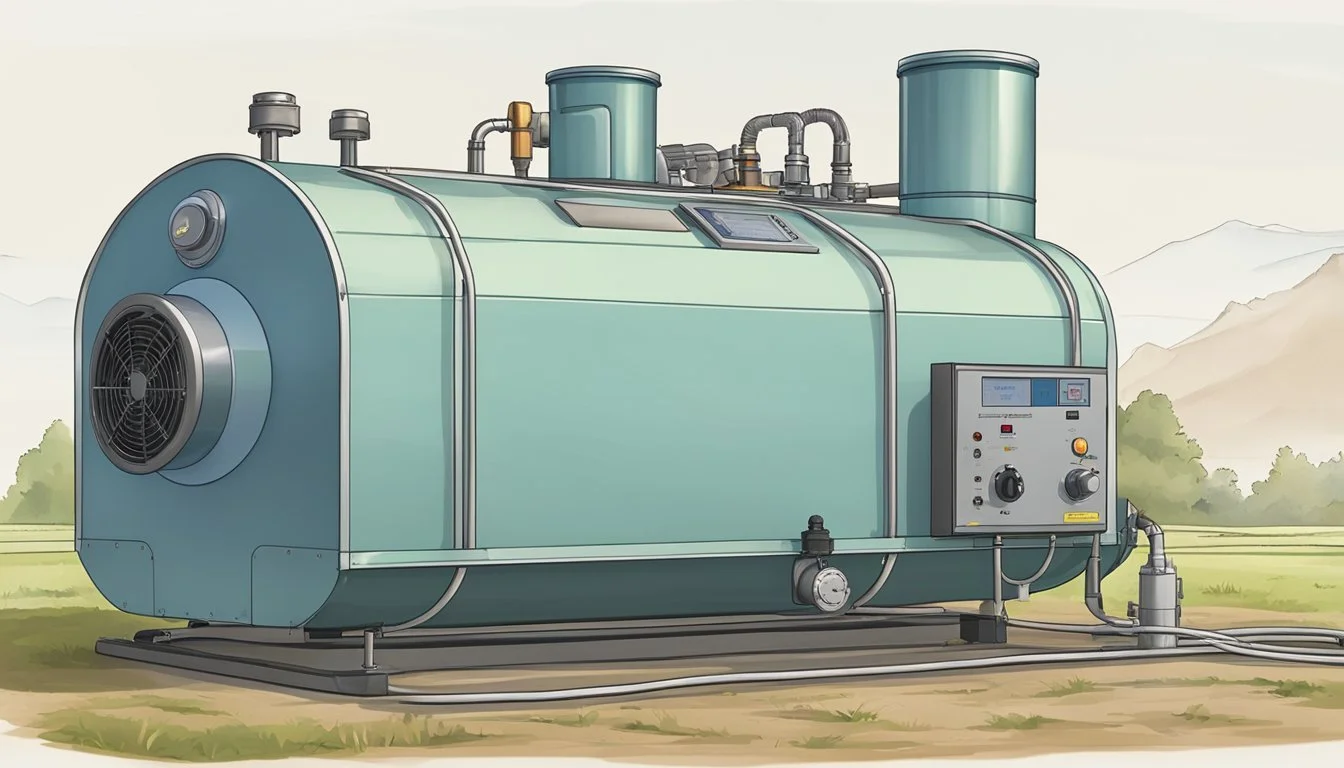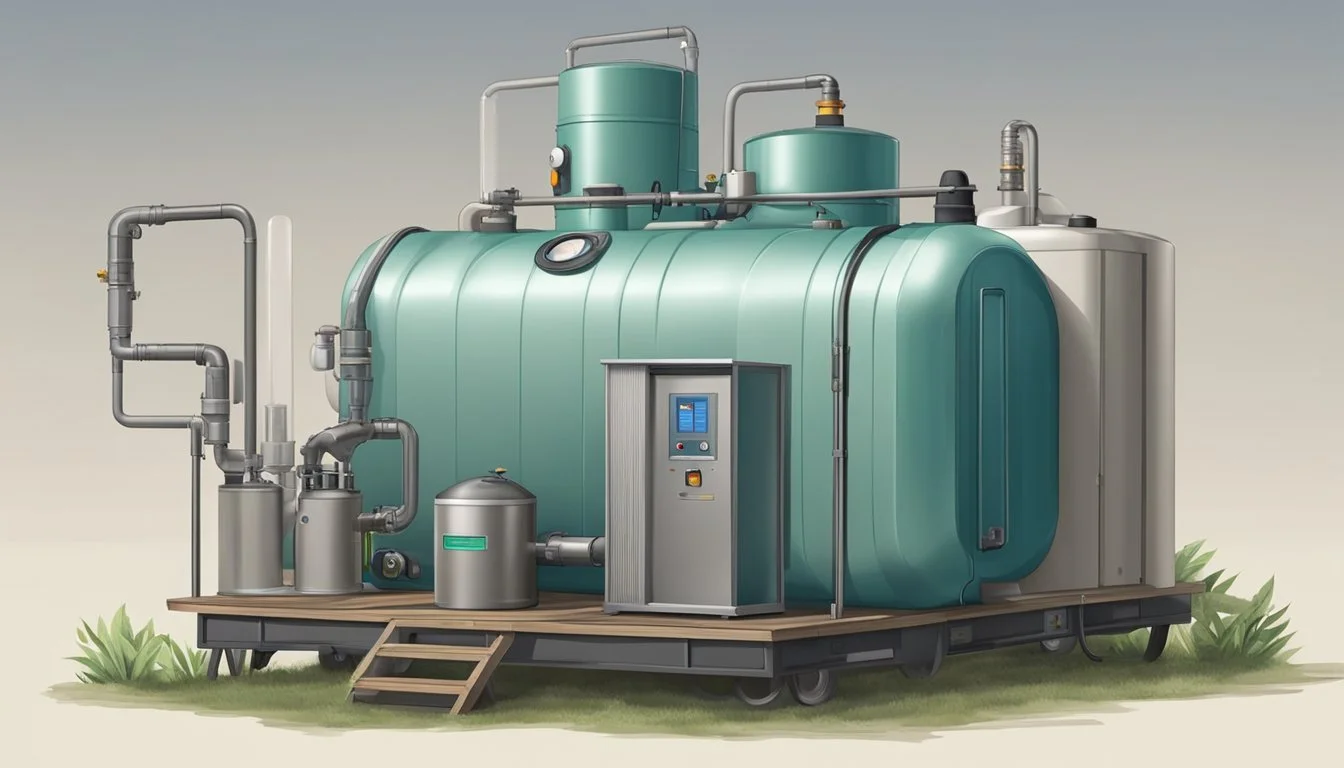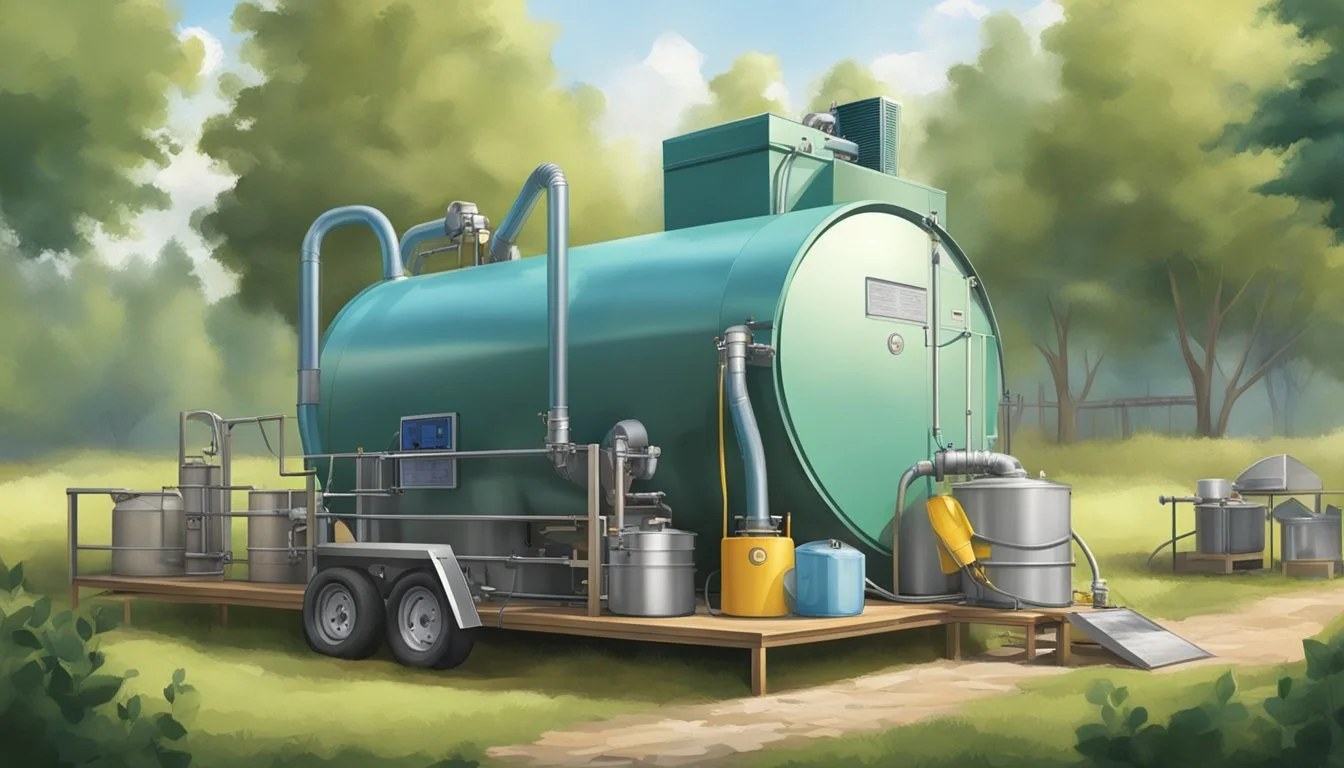Ultimate Guide to Using a Portable Steam Generator
Master Sterilization and Cleaning on Your Homestead
Sterilization is a critical process for maintaining a sanitary environment, especially in a homestead setting where self-sufficiency is key. Portable steam generators have proven to be efficient tools for both sterilization and cleaning, harnessing the power of steam to effectively eliminate microorganisms on various surfaces and instruments. They offer a convenient solution for homesteaders seeking to uphold high standards of cleanliness and hygiene without the need for harsh chemical agents.
A clean steam generator is designed to produce steam that is free from contaminants and minerals, making it ideal for applications where pure steam is necessary, such as in sterilizing equipment used in food preparation or medical procedures. The quality of steam is paramount; dry saturated steam with a high dryness fraction is preferred as it carries more energy and thus, enhances the efficiency of the sterilization process. These generators are typically user-friendly, featuring straightforward operation procedures and the flexibility to be used in various locations around the homestead.
Using a portable steam generator addresses the twin needs of effective sterilization and thorough cleaning in a compact, easy-to-use device. Given the limited space and resources often found on homesteads, the versatility and efficacy of portable steam generators provide a significant advantage. The combination of high temperature and pressure ensures that pathogens are effectively destroyed, which is essential for preventing the spread of diseases and maintaining the overall health of the homestead environment.
Basics of Steam Sterilization
When dealing with sterilization on a homestead, it's essential to understand the critical role of steam in the elimination of microorganisms. Through the precise application of heat, pressure, and steam, a sterile environment is achieved, ensuring the safety and cleanliness of tools and equipment.
Understanding the Sterilization Process
Steam sterilization is a widely used method for effectively killing all forms of microorganisms, including spores. This process involves the use of saturated steam that is applied to items at a high temperature for a specific duration. The combination of steam and pressure achieves a level of sterilization that is reliable for both healthcare and homestead settings. To accomplish this, temperatures typically must reach at least 121 degrees Celsius (250 degrees Fahrenheit), with a pressure of about 15 pounds per square inch for a certain time frame, usually around 15–30 minutes, to ensure thorough sterilization.
Steam as a Medium for Sterilization
Steam is favored for sterilization because its heat content is extremely high, which allows it to transfer heat more efficiently than dry air, enabling rapid destruction of microorganisms. Moreover, steam's ability to condense on surfaces and release latent heat permits it to penetrate materials effectively, ensuring a consistent sterilization environment. Saturated steam—steam at the boiling point for a given pressure—is ideal for sterilization as it contains sufficient energy for effective heat transfer without excess moisture that might dampen and damage the items being sterilized.
Components of a Clean Steam Generator
The primary components of a clean steam generator include:
Boiler: Heats the water to create steam.
Pressure Controls: Regulate the pressure within the generator to ensure the steam reaches the necessary temperatures for sterilization.
Steam Quality Monitoring: Ensures that steam remains at a high purity level, which is referred to as "clean steam."
Thermodynamic Controls: Maintain appropriate temperatures throughout the sterilization process.
Clean steam generation relies on the removal of impurities from the water source before steam production, giving rise to clean steam—the purest form of steam that is free from contaminants and suitable for sterilization. Clean steam generators are designed to produce this quality of steam by integrating advanced filtration and monitoring systems. These systems maintain the purity level essential for not only the sterility of items but also the integrity of sensitive instruments and equipment.
Health and Safety Concerns in Sterilization
Sterilization on a homestead is critical for preventing disease and ensuring the longevity of tools and equipment. It is imperative to understand the risks involved and the measures one must take to perform sterilization safely and effectively.
Importance of Safety in Sterilization Practices
Safety is paramount when implementing sterilization practices. A portable steam generator must be used with diligence as it involves high-pressure-high-temperature processes which, if mishandled, can lead to severe injuries. Operators should receive proper training to manage the steam generator, understanding how to properly seal and monitor sterilization chambers to prevent steam burns. Additionally, they should be well-versed in the correct usage of personal protective equipment (PPE), such as heat-resistant gloves and eye protection.
Training: Ensure all operators are adequately trained.
PPE: Always use appropriate personal protective gear.
Monitoring: Keep a strict check on pressure and temperature gauges.
Procedures should be in place to deal with emergencies, such as pressure relief valves and clear protocols for if a spill or exposure occurs. Regular maintenance of the steam generator prevents malfunction and potential health hazards.
Preventing Contamination and Microbial Growth
The main objective of sterilization is to eradicate all forms of microbial growth including bacteria and spores, thereby preventing contamination. To maintain the efficacy of sterilization, one must adhere to the best practices for preparing and loading items into the steam generator:
Clean items before sterilization to remove any debris or organic matter that may protect bacteria from the effects of steam.
Dry items completely to allow steam to effectively make contact with all surfaces.
Load instruments according to the manufacturer's guidelines to ensure proper steam circulation around each item.
It is crucial to expose the items to the proper temperature and pressure for the recommended duration as specified by the steam generator's guidelines. After sterilization, careful handling is required to prevent re-contamination; sterile items should be stored in a clean, dry environment.
Pre-cleaning: Thoroughly clean tools before sterilization.
Loading: Follow specific loading patterns for optimal steam reach.
Storage: Keep sterilized items in an environment that prevents contamination.
Equipment and Tools
Selecting the right equipment for sterilization and ensuring its proper maintenance are critical for effective operation on a homestead. Specifically, one needs to carefully choose appropriate sterilization equipment and establish a meticulous maintenance routine for steam generators and autoclaves.
Selecting Appropriate Sterilization Equipment
When homesteaders are in the market for a sterilization system, they should look for equipment that is robust and capable of reaching the necessary pressure and temperatures to achieve sterilization. The equipment must include an autoclave, which is a type of pressure vessel used to carry out the sterilization process through steam. Here is a brief checklist to aid in selecting the right sterilization equipment:
Capacity: Ensure the autoclave can accommodate the volume and size of items to be sterilized.
Temperature and Pressure Specifications: The autoclave should achieve a minimum of 121°C and 15psi, which are the standard conditions for sterilization.
Steam Source: A portable steam generator can be highly effective for homesteads, featuring either an integrated system which is dedicated to a single autoclave, or a standalone unit.
Quality of Steam: Pure, uncontaminated steam is critical, where available, consider opting for a steam generator like STERIS's Finn-Aqua Pure Steam Generator that ensures pyrogen-free steam.
Maintenance of Steam Generators and Autoclaves
Consistent maintenance is imperative for the longevity and reliability of steam generators and autoclaves. Regular monitoring and upkeep not only ensure optimal functioning but also prevent potential downtimes and safety issues. Consider the following maintenance protocols:
Daily Cleaning Verification: Any mechanical process, including cleaning using the steam generator, should be verified daily to ensure efficiency.
Routine Inspections: Regularly inspect seals, valves, and pressure release mechanisms for signs of wear or failure.
Documentation: Keep a record of all maintenance activities to track the performance and any recurring issues.
Professional Servicing: Schedule periodic professional maintenance to ensure that all components of your sterilization equipment are functioning correctly and to address any complex repairs.
Through diligent selection and maintenance of sterilization equipment, homesteaders can establish a dependable system for their cleaning and sterilizing needs.
Operation of Portable Steam Generators
Portable steam generators play a crucial role in ensuring the effectiveness of sterilization processes. Proper setup, understanding the sterilization cycle, and ensuring adequate air removal and steam penetration are fundamental in achieving optimal results.
Setting Up for Efficient Sterilization
To set up a portable steam generator for efficient sterilization, one must ensure that:
The generator is placed on a level surface to avoid operational issues.
At least 12 inches of clearance is maintained at the top and sides for maintenance and airflow.
The unit is located in a space that is easily drainable and away from flammable or corrosive materials.
The area is well-ventilated to assist in heat dissipation and prevent overheating.
The Sterilization Cycle and its Phases
The sterilization cycle consists of several phases, each critical to the process:
Heat-up Phase: The steam generator heats water to produce steam.
Exposure Phase: Objects are exposed to high-pressure steam for a predetermined time, which varies depending on the items being sterilized.
Exhaust/Drying Phase: Steam is released to return the pressure to normal, and items are dried to prevent wet packs, which can compromise the sterility of instruments.
Air Removal and Steam Penetration
For successful sterilization, it's imperative that all air is removed from the chamber to facilitate even and effective steam penetration. This can be achieved through:
Gravity Displacement: Allows steam to force air out through a vent, often used for uncomplicated loads.
Dynamic Air Removal: Uses a series of vacuum pulses to more effectively remove air from the chamber, ideal for complex loads or items with lumens.
Air removal is a vital step that ensures there are no cold spots or air pockets that could allow microbes to survive the sterilization cycle.
Quality and Compliance
When employing a portable steam generator for sterilization and cleaning on a homestead, it's crucial to ensure the steam quality and purity, to abide by relevant healthcare regulations where applicable, and to follow a strict routine of maintenance and testing for optimal performance. Each of these factors plays an integral role in reliability and compliance in any setting that requires stringent sterilization standards, such as healthcare.
Assuring Steam Quality and Purity
To guarantee effective sterilization and minimize issues like instrument staining or corrosion, one must prioritize the steam's quality and purity. Key indicators of steam quality are non-condensable gases, superheat, and dryness, all of which should align with the standards set by organizations such as the American Society of Mechanical Engineers (ASME). The following points are crucial:
Non-condensable gases: Should be less than 3.5% as these gases can affect the sterilization process efficiency.
Superheat levels: Must be minimized as excessive superheat could lead to inefficient heat transfer.
Dryness value: Should ideally be higher than 95%, as wet steam may not sterilize effectively and can lead to microbial growth.
Compliance with Healthcare Regulations
Adherence to established healthcare regulations, such as those outlined in ANSI/AAMI ST79, is essential when utilizing steam generators for healthcare sterilization. This involves understanding and implementing the guidelines for the sterilization process, including:
Utilization of appropriate sterilization practices, ensuring that these practices are in line with contemporary standards.
Ensuring that the sterilization equipment meets the necessary regulatory requirements, which may include performance qualifications and certifications.
Routine Maintenance and Testing for Reliable Performance
For the enduring performance of steam generators, conducting routine maintenance and testing is imperative. This scheduled maintenance not only upholds the purity and quality of the steam but also prolongs the equipment life and helps prevent potentially costly repairs. Important aspects include:
Regular Inspection: Checking for any signs of wear, corrosion, or damage.
Water Quality Testing: Ensuring the feed water does not contain impurities that could affect steam quality.
Validation and Calibration: Frequent testing of gauges and safety valves to maintain compliance with required standards, such as those from the ASME.
Implementing these practices will lead to efficient sterilization, contributing to overall safety and effectiveness in cleaning and sterilization processes on the homestead.
Technical Considerations
When setting up a portable steam generator for sterilization and cleaning, several technical considerations are crucial to ensure optimal performance and longevity. The boiler, piping, and pressure control must be meticulously understood and managed to facilitate effective heat transfer. Additionally, the treatment of feed water is imperative to prevent scale and corrosion, ensuring high-quality steam generation.
Understanding Boiler and Piping Requirements
The boiler is the heart of any steam generation system, and for homestead applications, one must choose a boiler that can handle the expected load. Plant steam, which is regular steam used in industrial processes, is often sufficient for sterilization purposes. Homesteaders should ensure that the boiler’s material and construction meet the necessary standards for safe operation.
Properly designed piping is essential for conveying steam to the point of use. The piping system must be able to withstand the operating pressure and temperature. Piping layout should promote efficient steam flow and condensate return to avoid energy loss and waterlogging.
Boiler criteria:
Capacity to meet demand
Durability under high temperature and pressure
Compliance with safety regulations
Piping considerations:
Material appropriate for steam and condensate
Insulation to minimize heat loss
Sloped and trapped to facilitate condensate return
Pressure Control and Heat Transfer
Precise pressure control is vital in a steam generator, as it directly relates to the temperature of the steam and thus the effectiveness of sterilization. Control systems must be in place to maintain the desired pressure to achieve optimal heat transfer. High pressure equates to high temperature, which is necessary to sterilize equipment effectively.
Heat transfer is a key aspect that determines the efficiency of the steam generator. The design of the heat exchanger should maximize the transfer of thermal energy from the plant steam to the feed water.
Pressure aspects:
Reliable control valves and gauges
Maintaining pressure for desired steam temperature
Heat exchange factors:
Efficient design for maximum energy utilization
Quick and even heat distribution
The Role of Water Treatment in Steam Generation
Water treatment is critical for preventing damage to the boiler and piping system. Feed water should be treated with reverse osmosis or other purification methods to remove impurities before entering the boiler. Water for injection (WFI), which is the purest form of water, is typically not necessary for homestead sterilization processes but is critical for pharmaceutically clean steam applications.
Water treatment objectives:
Prevent scale and corrosion
Prolong equipment life
Ensure consistent steam quality
Methods of water purification:
Filtration systems
Chemical treatment
Reverse osmosis systems
Applications in Various Industries
Portable steam generators are essential tools across various industries for sterilization and cleaning. These devices ensure high standards of cleanliness and help maintain product integrity.
Healthcare Facilities and Medical Devices
In healthcare facilities, steam generators play a crucial role in sterilizing medical devices, ensuring they meet stringent hygiene standards. They are commonly used in dental offices for tools that require delicate yet effective sterilization and in respiratory therapy for equipment like ventilators and nebulizers. Anesthesia equipment, which requires meticulous cleaning to prevent infections, is also sterilized using steam generators.
Pharmaceuticals and Biotechnology
The pharmaceutical industry and biotechnology sectors demand the highest levels of cleanliness. Steam generators are employed to sterilize equipment, clean manufacturing areas, and ensure that bioreactors and fermenters are free from contaminants. They offer a reliable sterilization method without the use of potentially harmful chemicals.
Food & Beverage and Laboratory Use
Within the food & beverage industry, cleanliness is paramount not just for safety but also for the quality of the final product. Steam generators help in the thorough cleaning and sterilization of equipment like vats, mixers, and conveyor belts. In laboratories, sterilization ensures precise and reliable test results, free from contamination. Equipment such as glassware, lab benches, and scientific instruments are regularly subjected to steam sterilization.
Environmental and Economic Advantages
Portable steam generators offer a suite of benefits that align with eco-friendly practices and can also be kind to the homesteader's wallet. They harness the natural cleaning power of high-temperature steam, eliminating the need for chemical cleaners. This move away from chemicals means less environmental pollution and a lower likelihood of allergic reactions for the users and other occupants. Steam penetrates surfaces deeply, effectively sanitizing areas without the associated waste or harm of synthetic substances.
Economically, the use of a portable steam generator becomes a cost-effective solution over time. The upfront investment may be higher compared to traditional cleaning methods, but one must consider the savings on cleaning agents and the extended lifespan of surfaces due to a gentler, although thorough, cleaning process. The operation of steam generators can also lead to decreased water usage, as the high-efficiency steam requires less water than many other cleaning methods.
Regarding sustainability, a steam generator aligns with sustainable living goals. The process of generating clean steam requires little more than water and electricity, making it possible to pair the system with renewable energy sources, thus reducing the homestead’s carbon footprint.
Chemical-free cleaning
Economic Benefit: Lower long-term costs
Sustainability Aspect: Reduced pollution
Deep sanitization
Economic Benefit: Savings on water
Sustainability Aspect: Less resource-intensive
Efficient cleaning
Economic Benefit: Minimal maintenance
Sustainability Aspect: Complement to renewable energy
In summary, portable steam generators represent a practical and responsible choice for homesteaders looking to maintain a clean, healthy living environment while also keeping an eye on both their budget and the health of the planet.
Best Practices in Sterilization
In the realm of sterilization on a homestead, adherence to proper procedures ensures safety and efficacy. These practices involve meticulous documentation, comprehensive education for equipment users, and the correct handling and disposal of sterilized materials.
Documentation and Monitoring
Documentation is a critical component of the sterilization process. Users should maintain precise records of:
Sterilization cycle parameters (time, temperature, and pressure)
Load contents
Operator identification
Maintenance and repair logs
Monitoring of the sterilization process involves the use of biological and chemical indicators to verify the effectiveness of each cycle. This ensures that all microorganisms are reliably destroyed.
Education for Equipment Users
Users must receive thorough education on the operation and maintenance of the steam generator. The curriculum should include:
Operational procedures: Clear instruction on how to properly use the steam generator
Safety measures: Awareness of potential hazards and the importance of using personal protective equipment (PPE)
Troubleshooting: Guidance on identifying and resolving common issues with the equipment
Regular refresher courses should be mandated to ensure ongoing proficiency and adherence to updated protocols.
Handling and Disposal of Sterilized Material
After sterilization, materials must be handled with care to maintain sterility. Users must:
Transport sterilized items in a manner that prevents contamination
Store items in a clean, dry environment until use
Disposal of microbiological waste, including sharps, must be conducted with diligence. This involves:
Using designated sharps containers that are puncture-resistant
Disposal of microbiological waste as per local regulations to prevent environmental contamination
Following these guidelines will maximize the safety and effectiveness of sterilization practices on any homestead.
Troubleshooting and Resolving Common Issues
When encountering problems with a portable steam generator, it's essential to approach troubleshooting methodically. Operators should begin with routine maintenance checks before delving into more complex issues.
Routine Maintenance:
Check water quality before use; impure water can lead to scale buildup.
Inspect hoses and connections regularly for leaks or wear.
Ensure the generator is clear of debris and dust.
Common Troubleshooting Steps:
No Steam or Insufficient Steam:
Ensure there is adequate water in the tank.
Check if the steam outlets are blocked and clear if necessary.
Verify that the generator's temperature and pressure settings are correct.
Unusual Noise or Vibration:
Tighten any loose parts or connections.
Check for and remove any obstructions in the nozzle or hose.
Unit Does Not Power On:
Confirm that the power cord is plugged in and that the electrical outlet is functioning.
Examine the circuit breakers or fuses for any issues.
Industry Problem: Inconsistent sterilization due to scaling: Using distilled water can help prevent scale accumulation, a common industry problem causing malfunctions and reducing efficiency.
Exposure to Elements:
Keep the generator sheltered from environmental exposure that may cause rust or electrical issues.
Always dry the unit completely after cleaning to prevent moisture damage.
By following these steps, users can often resolve issues without the need for professional repair, ensuring their steam generator remains a reliable tool for sterilization and cleaning on the homestead.







